#Leonard Bahr
Photo
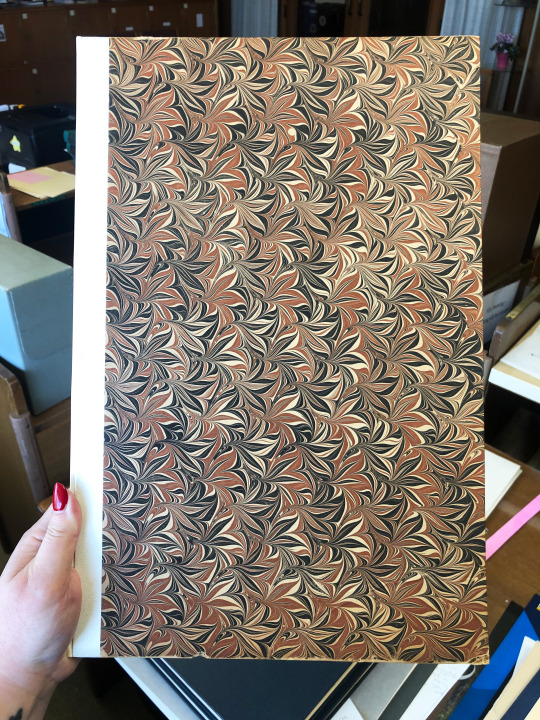




Marbled Monday
It’s time for another Marbled Monday! This week we have some gorgeous marbling found in the binding of C-S The Master Craftsman by American book collector and businessman Norman H. Strouse and British book designer and historian of print John Dreyfus. The book includes two essays about English artist and bookbinder T.J. Cobden-Sanderson, each by one of the authors. It was published in 1969 by the Adagio Press in Harper Woods, Michigan and printed by Leonard Bahr, who founded the Adagio Press. Printed in Palatino type designed by Hermann Zapf, the book is printed on handmade Tovil paper, which was printed dry (usually this type of paper is best printed on damp). Bahr explains in the colophon that there were many issues faced while printing the book, namely time (owing to the fact that “The Adagio Press is a sparetime printing activity, confined to the evening and weekend hours available after normal employment”) and the number of pages able to be set at one time due to the amount of type owned by the press. The book was printed in an edition of 329 copies. Our copy is another gift from our friend Jerry Buff.
Oddly enough, the 2-page colophon doesn’t mention the marbled paper used for the binding! The marbling pattern isn’t to be found in my trusty reference from the University of Washington Libraries and appears to be a unique, floral or foliage-inspired design. Done in cream, black, and red, the pattern features flowers or leaves with the colors swirled together. It’s interesting and lovely, especially when you get up really close to see the swirly interstitial bits.
View more Marbled Monday posts.
VIew more posts about work by the Adagio Press.
-- Alice, Special Collections Department Manager
#The Adagio Press#Marbled Monday#T.J. Cobden-Sanderson#Norman H. Strouse#John Dreyfus#Leonard Bahr#Adagio Press#marbled paper#patterned paper#marbling#Palatino#Hermann Zapf#Jerry Buff
50 notes
·
View notes
Text
What I read in 2022
A little late. 2023 to follow soon.
* * *
Ying Shih Yü, Chinese History and Culture, Volume 1
Yuen Yuen Ang, China’s Gilded Age
Lucia Berlin, A Manual for Cleaning Women
Stephan Körner, Kant
Alexander Herzen, My Past and Thoughts, Vol 5
Leonard Susskind & George Hrabovsky, Classical Mechanics: The Theoretical Minimum
Frank Dikotter, Mao’s Great Famine
Alexander Herzen, My Past and Thoughts, Vol 6
George Orwell, 動物農莊(港豬版)
Tom Hopkins, Sales Prospecting for Dummies
Ray Bradbury, Fahrenheit 451
Paul Gilroy, There Ain’t No Black in the Union Jack
Kenn Amdahl, There Are No Electrons
Gianfranco Poggi, The Development of the Modern State
Ehrhard Bahr & Ruth Goldschmidt Kunzer, Georg Lukacs
Gianfranco Poggi, Forms of Power
Thomas Gordon, Parental Effectiveness Training
Robert Heinlein, Starship Troopers
James Fok, Financial Cold War
Angela Carter, The New Eve
Elizabeth Strout, My Name is Lucy Barton
Ying Shih Yü, Chinese History and Culture, Volume 2
Bill Hayton, The Invention of China
Murasaki Shikibu, The Tale of Genji
Hannah Arendt, The Life of the Mind
林匡正, 香港足球史
Karl Ulrich & Lele Sang, Winning in China
Harry Morgan, Sunny Places for Shady People
Elizabeth Strout, Amy and Isabelle
Naomi Standen (ed), Demystifying China
Angela Carter, Wise Children
Elizabeth Strout, The Burgess Boys
John Gribbin, Get a Grip on Physics
Chris Waring, An Equation for Every Occasion
Hannah Arendt, The Human Condition
Mary McCarthy, Birds of America
Mary McCarthy, The Company She Keeps
Lisa Taddeo, Three Women
Hon Lai-chiu, The Kite Family
Jim Breithaupt, Physics
John Gribbin, Seven Pillars of Science
John Gribbin, Six Impossible Things
Barry Lopez, Horizon
Elizabeth Strout, Olive Kittridge
Elizabeth Strout, Anything is Possible
Elizabeth Strout, Oh William!
Mike Goldsmith, Waves
Monica Ali, Untold Story
Catherine Merridale, Ivan’s War
Jessica Andrews, Saltwater
Val Plumwood, Feminism and the Mastery of Nature
AM Homes, May We Be Forgiven
Gaia Vince, Adventures in the Anthropocene
Ho-fung Hung, City on the Edge
Richard Feynman, QED
Fredric Raichlen, Waves
Angela Carter, The Magic Toyshop
Karen Cheung, The Impossible City
Adam Tooze, The Deluge
Celeste Ng, Everything I Never Told You
Sean Carroll, The Biggest Ideas in the Universe
Louisa Lim, The Indelible City
Gavin Pretor-Pinney, The Wave Watcher’s Companion
Adam Tooze, The Wages of Destruction
Adam Tooze, Shutdown
Annie Ernaux, A Frozen Woman
Ursula Le Guin, The Lathe of Heaven
Virgina Woolf, The Waves
Ursula Le Guin, Tehanu
Ursula Le Guin, The Telling
Gaia Vince, Nomad Century
Janna Levin, How the Universe Got Its Spots
Lara Alcock, Mathematics Rebooted
Donella Meadows, Thinking in Systems
Emily St John Mandel, The Glass Hotel
Anon, 伊索傳 & 驢仔
Elizabeth Kolbert, Under a White Sky
Emily St John Mandel, Station Eleven
Gary Gerstle, The Rise and Fall of the Neoliberal Order
Bruno Mansoulié, All Of Physics (Almost) In 15 Equations
0 notes
Text
This Month In History - November
This is quite a month for landmark pop culture anniversaries:
Nov. 2, 2001: Amelie opens in the U.S.

In Nov. 2001, one of my favorite French films ever opened in the U.S. Here is my piece I wrote in 2016. I was also lucky enough to see this at the Arclight Boston on Valentine’s Day 2020 and it still holds up. Happy 20th Amelie!
Nov. 7, 1986: Something Wild opens
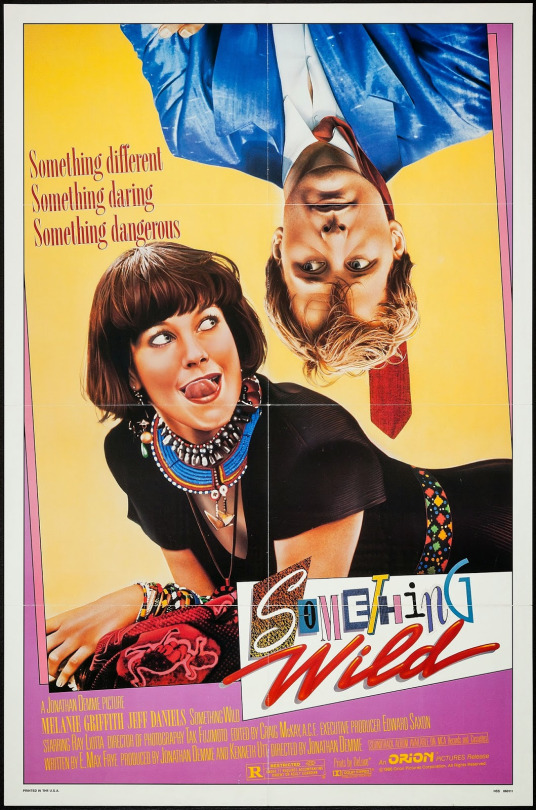
In Nov. 1986, Jonathan Demme’s new wave screwball comedy masterpiece was released. It is one of my 15 favorite movies ever and I’ve written quite a bit about it previously, including this piece I wrote in 2016. Happy 35 Something Wild!
Nov. 8, 1971: Led Zeppelin IV released

In Nov. 1971, Led Zep’s magnum opus was released. Here is my piece I wrote in 2016. Happy 50th LZ4!
Nov. 13, 1971: Duel premiered
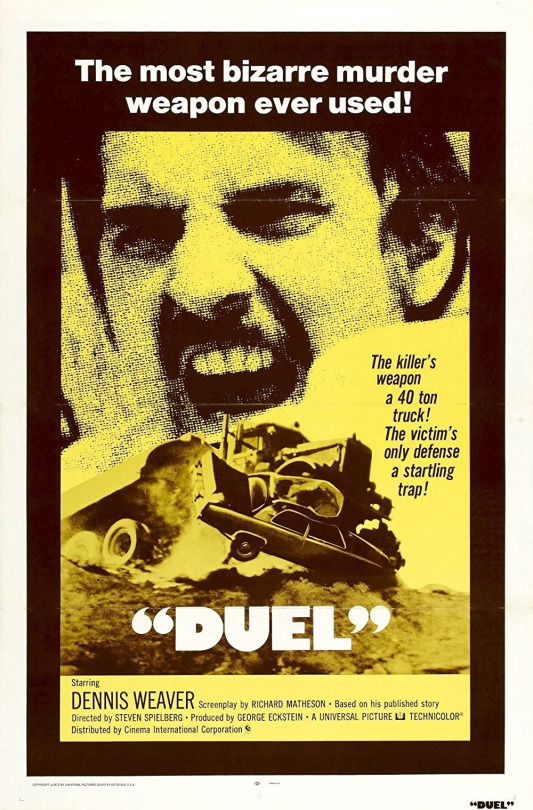
In Nov. 1971, Steven Spielberg’s feature length directorial debut (after Firelight that he made as a teen that is) premiered on television. Even for a movie-of-the-week, you could see the talent that the director had at such a young age. The whole entire movie is about a business man (played by Dennis Weaver) who is driving and is slowly being chased by a tractor-trailer. The scares are there and so are the thrills. Happy 50th Duel!
Nov. 15, 1986: License to Ill released
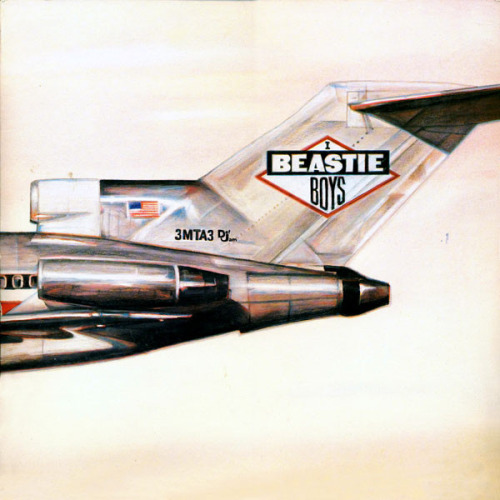
In Nov. 1986, the debut album from The Beastie Boys was released. Here is my piece I wrote in 2016. Happy 35th LTI!
Nov. 18, 1991: Achtung Baby released

In Nov. 1991, U2 reached a serious creative peak. Here is my piece I wrote in 2016. Happy 30th AB!
Nov. 18, 2011: The Descendants opens

In Nov. 2011, Alexander Payne’s excellent comedy-drama was released. Here is my piece I wrote in 2016. Last year, I named it my #9 Movie of the 2010s. Happy 10 Descendants!
Nov. 18, 2016: Hardwired...to Self-Destruct released

In Nov. 2016, Metallica released their 10th album, a double album at that. It was a serious return to form for the band. Not going to lie, this is the band’s best album since the 90s, hands down! I included it on my 50 Best Albums of the 2010s list too. Happy 5 HTSD!
Nov. 26, 1986: Star Trek IV: The Voyage Home opens

In Nov. 1986, one of the best Star Trek movies was released. Here is my piece I wrote in 2016. Happy 35th ST4!
Nov. 27, 1991: Hearts of Darkness: A Filmmaker’s Apocalypse premieres
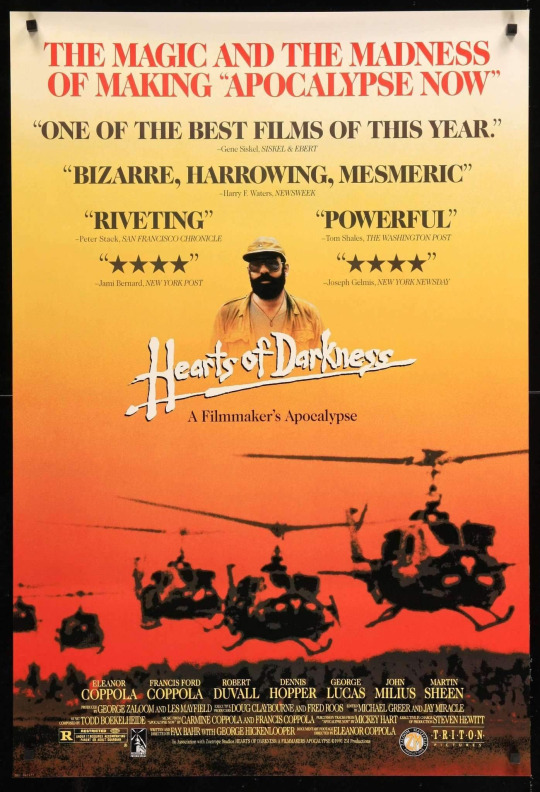
In Nov. 1991, one of the greatest documentary films about filmmaking was released. Shot over a decade earlier Francis Ford Coppola’s Vietnam War epic Apocalypse Now was released, this behind-the-scenes footage shot by Francis’s wife Eleanor. The footage was put together with the help of Fax Bahr and George Hickenlooper. I watched it (and studied it) in my Directing class in college. A real inspiration as a director and as a documentarian. Happy 30th HOD!
#this month in history#amelie#jean-pierre jeunet#something wild#jonathan demme#led zeppelin#duel#steven spielberg#the beastie boys#U2#the descendants#alexander payne#metallica#star trek iv: the voyage home#leonard nimoy#hearts of darkness#eleanor coppola#francis ford coppola#fax bahr#george hickenlooper#film geek#music nerd#tv#documentary#2001#1986#1971#1991#2011#2016
6 notes
·
View notes
Text
The Art Of Darkness - Apocalypse Now and Full Metal Jacket
"War is damnation," the prosaism broadcasts, yet it is by all accounts engaging hellfire. Alongside other horrendous subjects, for example, murder and vampirism, war positions among the most famous and ordinarily utilized topic of recorded excitement, and no war has yielded more or preferable movies over the one in Vietnam in the vicinity of 1955 and 1975. Regardless of whether itemizing the impacts of the war by concentrate its result or getting directly into the core of the fights, the Vietnam War has ended up being a wellspring of unlimited enthusiasm for producers and moviegoers alike. Maybe it is the ethical equivocalness of Vietnam that makes it the most fascinating war for film adjustments, and no movies delineate this vagueness superior to anything Francis Ford Coppola's Apocalypse Now (1979) and Stanley Kubrick's Full Metal Jacket (1987).
End of the world Now was the first and still, seemingly, the best film to happen amidst the war itself, shot not long after its closure in the mid-'70s and discharged on the precarious edge of the Reagan time in 1979. Roused by Joseph Conrad's 1899 novella Heart of Darkness, Coppola and screenwriter John Milius supplant the allegorical excursion of its focal character from 1890s Africa toward the Southeast Asian wilderness of the 1960s. Personally attached to this move in perspective is that, while Heart of Darkness' storyteller, Charlie Marlowe, starts as a rational and stable man who confronts frenzy and the inborn abhorrence of humanity as Mister Kurtz, Apocalypse Now's storyteller, Benjamin Willard (Martin Sheen), has just been driven at any rate to the skirt of franticness by his past Vietnam encounter before the start of the film. This change of point of view recommends that ethical quality and rational soundness had turned out to be significantly more conditional and equivocal in the season of the Vietnam War.
At the 1979 Cannes Film Festival debut of the film, Coppola expressed that "My film is not about Vietnam; my film is Vietnam." We are pushed into a universe of frenzy with no ethical focus, a well-suited vision of conditions in the Vietnam War. This expectation is prove not just by the disordered and vicious nature of the whole film, additionally in the choice to make the story's storyteller a crazy person, subsequently denying the watcher of an all the more customarily relatable entryway into the film's story.
Similarly as the film itself "is Vietnam" in world, three of its focal characters likewise are Vietnam in microcosm: Willard, Colonel Kurtz (Marlon Brando) and Captain Kilgore (Robert Duvall). Willard has been in the wilderness so much it has moved toward becoming his identity; in the film, he says of Vietnam: "When I was here I needed to be there. When I was there, whatever I could consider was getting over into the wilderness." Kurtz and Kilgore are two sides of a similar coin, the officer gone distraught from the franticness of war. Kilgore is the euphoric psycho who delights in fight ("I adore the possess a scent reminiscent of napalm in the morning," he says in one of the film's most well known scenes. "Scents like triumph") and has figured out how to keep a valid position in the military notwithstanding haphazardly annihilating whole towns, to the tune of Richard Wagner's "Flight of the Valkyries," for the sole motivation behind clearing a neighboring shoreline with the goal that he and his men can go surfing. Pundit Michael Wood, in his article "Blasts and Whispers" from the October 1979 New York Review of Books, attests that Kilgore ought to have been the Kurtz figure of the film, a man so colorfully crazy that he gives an unmistakable counterpoint to Sheen's Willard, yet the nearer likenesses amongst Willard and Brando's Kurtz allude to a figurative excursion of Willard into himself, into the darkest scopes of his own spirit, that echoes his strict voyage downriver to Kurtz's nest. When he finishes his task by murdering Kurtz, he has maybe quieted the infringing obscurity in his own heart.
End times Now's general vision of franticness - from Willard to Kilgore to Kurtz, alongside captivating side characters, for example, Sam Bottoms' LSD-mishandling surfer/officer and Dennis Hopper's over the top photojournalist - paints an exasperating picture of the Vietnam encounter, as well as of all humankind in a world that made the barbarities of Vietnam conceivable. As Coppola himself says in regards to the making of the film in Fax Bahr, George Hickenlooper and Eleanor Coppola's 1991 narrative Hearts of Darkness: A Filmmaker's Apocalypse, "We were out there with an excessive amount of gear, an excessive amount of cash and a lot of time... what's more, we as a whole went somewhat crazy," which can be viewed as a keen feedback of America's position in the war itself. At last, Apocalypse Now is more than just a war film, which might be the reason numerous commentators think of it as the best war film at any point made, and maybe even the best American film of any sort.
Full Metal Jacket has likewise been "acclaimed by commentators around the globe as the best war motion picture at any point made," as indicated by Warner Home Video Inc's. 1990 video arrival of the film. Despite the fact that it could be contended that Apocalypse Now is a more noteworthy realistic accomplishment, it is less reasonable to state that it is all the more consistent with life. End of the world Now is very adapted and subjective, while Full Metal Jacket has a particular narrative feel, regardless of its frequently shocking cinematography and utilization of elaborate gadgets, for example, moderate movement. These methodologies mirror the foundation of every chief: Kubrick started with documentaries like "Flying Padre" (1951), while Coppola got his begin at B-motion picture maker Roger Corman's American-International Pictures.
Full Metal Jacket's more goal, reasonable viewpoint additionally mirrors the perspective of its hero and storyteller, Private Joker (Matthew Modine), who experiences Marine preparing to wind up noticeably a field journalist in Vietnam. Despite the fact that Joker is an a great deal more normal and balanced character than Willard, he too is profoundly adulterated by his experience, as he turns out to be increasingly negative all through the film. As Joker says at one point in the film, in the persona of John Wayne, "A day without blood resembles a day without daylight." This skeptical loss of purity is a firm basic topic in the film, which, similar to Apocalypse Now, is a voyage into the core of murkiness. This is set up in the opening succession, which demonstrates its different characters having their heads shaved, set to the tune of Johnny Wright's "Welcome Vietnam." Full Metal Jacket is, basically, a story about growing up - but an exceptionally merciless one - that is partitioned into two independent, yet associated, stories inside the film.
The primary story pushes the watcher into the inflexible, savage existence of Marine preparing camp and, however Joker is built up as the hero from the begin, the focal character of this first story is really Leonard Lawrence (Vincent D'Onofrio). Leonard, named "Gomer Pyle" by cruel penetrate educator Sgt. Hartman (R. Lee Ermey), is a great schoolyard spook's casualty: overweight, ease back witted to the point of mellow impediment, very defenseless and inclined to crying under pressure. Hartman, as a bore teacher, has made a profession of being a domineering jerk, and the two promptly fall into this dynamic, with Hartman more than once stifling, slapping and mortifying Leonard all through the film. This story circular segment is effectively broken into three acts: Leonard's mortification, Leonard's training, and Leonard's reprisal. Unexpectedly, the culmination of Leonard's instruction is the time when he goes distraught from the embarrassment and manhandle he has endured on account of Hartman and in addition alternate enlisted people. Leonard at long last snaps when Joker hints at his first debasement: subsequent to become a close acquaintence with Leonard and instructing him, Joker eventually participates in a ceremonial beating of Leonard after he and alternate volunteers are rebuffed for Leonard's transgressions. Now, the story moves into its third demonstration, in which Leonard renders retribution on the tormenting Sgt. Hartman, whose last words are more unrepentant tormenting: "What is your significant glitch? Did your Mommy and Daddy not give you enough love when you were youthful?" Ultimately, however, Leonard pardons Joker and extras his life before taking his own.
The title of the film originates from this first half, in a monologue Leonard gives for his rifle, which speaks to him a measure of cleanliness and request in the "realm of crap" in which he exists. This fundamentally totals up the topic of the film, which is additionally shown in its two-section structure: regardless of how taught and organized a warrior's preparation and weapons might be, the war itself is still disorder. This confusion runs uncontrolled in the second 50% of the film, in which Joker winds up amidst battle, at first as an outside spectator revealing what he sees, at the end of the day having no real option except to take an interest in the brutality surrounding him. Like Apocalypse Now's Willard, Joker is to some degree on the edges of battle, yet at the same time profoundly affected and undermined by it; while Willard is a procured executioner working outside the fundamental clash of the Vietnam War, Joker is amidst this contention be that as it may, initially at any rate, does not take an interest in any killing.
The two movies address a subject that is for the most part evaded or disregarded in war movies: that of sexuality in wartime. Between Apocalypse Now's prematurely ended Playboy Bunny visit from the get-go in the film and Full Metal Jacket's Vietnamese whores in the second half, the two movies articulately represent the statement so persuasively voiced in Chris Hedges' 2002 diary of wartime news coverage, War Is a Force That Gives Us Meaning, that "there is in wartime an almost general distraction with sexual contacts." The undercurrent of assault and pressure display in the two cases indicates the ethical equivocalness of this kind of sexuality, which, by augmentation, demonstrates the flawed profound quality of war itself.
This vagueness is likewise found in the trips embraced by the focal characters of each film. In Full Metal Jacket's second story, Joker is given a mission by his boss, Lt. Lockhart (John Terry), which drives him into the core of obscurity, where he confronts his very own definitive debasement heart (a microcosm for
2 notes
·
View notes
Link
The Big Bang Theory Online Stream - https://seriesstream.online/?p=1638 - The Big Bang Theory Online Stream The Big Bang Theory Online Stream – The Big Bang Theory is centered on five characters living in Pasadena, California: roommates Leonard Hofstadter and Sheldon Cooper; Penny, a waitress and aspiring actress who lives across the hall; and Leonard and Sheldon’s equally geeky and socially awkward friends and co-workers, mechanical engineer Howard Wolowitz and astrophysicist Raj Koothrappali. The geekiness and intellect of the four guys is contrasted for comic effect with Penny’s social skills and common sense. The show’s pilot episode premiered on September 24, 2007. This was the second pilot produced for the show. A different pilot was produced for the 2006–07 television season but never aired. The structure of the original unaired pilot was substantially different from the series’ current form. The only characters retained in both pilots were Leonard (Johnny Galecki) and Sheldon (Jim Parsons), who are named after Sheldon Leonard, a longtime figure in episodic television as producer, director and actor. Althea (Vernee Watson) was a minor character that appeared in both pilots. The first pilot included two female lead characters who were not used in the second pilot. The characters were Canadian actress Amanda Walsh as Katie, “a street-hardened, tough-as-nails woman with a vulnerable interior,” and Iris Bahr as Gilda, a scientist colleague and friend of the male characters. Sheldon and Leonard meet Katie after she breaks up with a boyfriend and they invite her to share their apartment. Gilda is threatened by Katie’s presence. Test audiences reacted negatively to Katie, but they liked Sheldon and Leonard. The original pilot used Thomas Dolby’s hit “She Blinded Me with Science” as its theme song. Although the original pilot was not picked up, its creators were given an opportunity to retool it and produce a second pilot. They brought in the remaining cast and retooled the show to its final format. Katie was replaced by Penny (Kaley Cuoco). The original unaired pilot never has officially been released, but it has circulated on the Internet. On the evolution of the show, Chuck Lorre said, “We did the ‘Big Bang Pilot’ about two and a half years ago, and it sucked … but there were two remarkable things that worked perfectly, and that was Johnny and Jim. We rewrote the thing entirely and then we were blessed with Kaley and Simon and Kunal.” As to whether the world will ever see the original pilot on a future DVD release, Lorre said, “Wow, that would be something. We will see. Show your failures…” The first and second pilots of The Big Bang Theory were directed by James Burrows, who did not continue with the show. The reworked second pilot led to a 13-episode order by CBS on May 14, 2007. Prior to its airing on CBS, the pilot episode was distributed on iTunes free of charge. The show premiered on September 24, 2007, and was picked up for a full 22-episode season on October 19, 2007. The show is filmed in front of a live audience, and is produced by Warner Bros. Television and Chuck Lorre Productions. Production was halted on November 6, 2007, due to the Writers Guild of America strike. Nearly three months later, on February 4, 2008, the series was temporarily replaced by a short-lived sitcom, Welcome to The Captain. The series returned on March 17, 2008, in an earlier time slot and ultimately only 17 episodes were produced for the first season. After the strike ended, the show was picked up for a second season, airing in the 2008–2009 season, premiering in the same time slot on September 22, 2008. With increasing ratings, the show received a two-year renewal through the 2010–11 season in 2009. In 2011, the show was picked up for three more seasons.In March 2014, the show was renewed again for three more years through the 2016–17 season. This marks the second time the series has gained a three-year renewal. In March 2017, the series was renewed for two additional seasons, bringing its total to 12, and running through the 2018–19 television season. - SerieSStream.online
0 notes
Text
May 4 in Music History
1604 Death of Italian organist, composer, and publisher Claudio Merulo.
1611 Birth of composer Carlo Rainaldi.
1665 Birth of Italian harpsichord craftsman Bartolomeo Cristofori in Padua.
1738 Birth of composer Josef Kohaut.
1744 Birth of Austrian-Spanish pianist and composer Marianne Martinez.
1774 FP of Jommelli's "Ciro riconosciuto" Bologna.
1763 Birth of composer Franz Stanislaus Spindler.
1769 Birth of composer Charles Hague.
1777 Birth of composer Charles-Louis-Joseph Hanssens.
1778 FP of Sacchini's "L'Amore soldato" London.
1795 FP of F. J. Haydn's Symphony No. 104, conducted by Haydn, at the King's Theater in London.
1802 FP of Catel's "Sémiramis" Paris.
1830 Birth of English impresario J. H. "Colonel" Mapleson in London.
1833 FP of Barnet's "The Soldier' s Widow or The Ruins of the Mill" London.
1835 Birth of composer Edmund Hart Turpin.
1855 Birth of composer Ludwig Schögel.
1856 FP of Dargomyzhsky's "Rusalka" St. Petersburg.
1860 Birth of Austrian composer Emil Nikolaus Von Reznicek.
1867 Birth of composer Dynam-Victor Fumer.
1869 Birth of Polish composer Sigismond Stojowski.
1883 Birth of Russian conductor Nikolai Malko.
1884 FP of Nessler's "Der Trompeter von Säkkingen" Leipzig.
1886 The gramophone, the first practical phonograph, was patented.
1888 Premiere of Faure's Requiem.
1891 Birth of American composer Frederick Jacobi in San Francisco.
1895 FP of Antonin Dvorák's cantata The American Flag Op. 102, in NYC.
1895 FP of Kienzl's "Der Evangelimann" Berlin.
1902 Birth of composer Cvjetko Rihtman.
1905 Birth of English soprano Margaret Field-Hyde in Cambridge.
1905 Birth of Hungarian cellist and composer Matyas Gyorgy Seiber.
1907 Birth of Swiss mezzo-soprano Elsa CaveIti.
1915 Birth of composer Pedro Saenz.
1917 Birth of American composer Edward T. Cone.
1919 Birth of German mezzo-soprano Carla Henius in Mannheim.
1919 Birth of composer Dimiter Petkov.
1920 First American orchestra to make a European tour. The Symphony Society of New York performs at the Paris Opera House.
1921 Birth of Dutch tenor John van Kesteren Hague.
1924 Birth of Russian pianist Tatiana Nikolayeva in Bezhitz.
1924 FP of N. Miaskovsky's Symphony No. 6, in Moscow.
1926 FP of Castelnuovo-Tedesco's "La mandragola" Venice.
1930 Birth of American soprano Roberta Peters.
1931 Birth of Russian conductor Gennadi Rozhdestvensky in Moscow.
1932 Death of Spanish bass Jose Mardones.
1932 Birth of composer Fausto Razzi.
1937 Birth of composer Hans Ulrich Lehmann.
1937 Birth of Spanish-English harpist Marisa Robles.
1938 FP of Malipiero's "Antonio e Cleopatra" Florence.
1942 Birth of Mexican conductor Enrique Batiz.
1943 Death of Italian soprano Cesira Ferrani in Vercelli.
1948 Birth of English composer Michael Blake Watkins in Ilford, Essex.
1949 Birth of American composer John Newell in Charlotte, NC.
1949 FP of Bacon´s Folk opera "A Drumlin Legend" NYC.
1940 FP of Pizzetti's "Vanna Lupa" Florence.
1950 FP of Malipiero's "L'allegra brigata" Milan.
1951 Death of Belgian baritone Hector Dufranne.
1951 Birth of composer Peter Ware.
1953 FP of Wm. Schuman's "The Mighty Casey" Hartford, CT.
1953 FP of Delius' "Irmelin" Oxford.
1955 Death of Rumanian conductor, violinist, and composer Georges Enesco.
1972 Birth of American composer Scott Rosenberg.
1974 FP of Einojuhani Rautavaara's Flute Concerto, flutist Gunilla von Bahr, Swedish Radio Symphony, Stig Westerberg conducting in Stockholm.
1989 FP of Joan Tower's Island Prelude for oboe and strings. Peter Bowman and the St. Louis Symphony, Leonard Slatkin conducting.
2003 Death of Italian bass-baritone Sesto Bruscantini.
2003 Death of English composer Arthur Oldham in Villejuif, France.
0 notes
Text
Spielberg’s push against Netflix at the Oscars hits a nerve
LOS ANGELES — When Steven Spielberg speaks about the business of Hollywood, everyone generally listens and few dissent. But reports that he intends to support rule changes that could block Netflix from Oscars-eligibility have provoked a heated, and unwieldy, debate online this weekend. It has found the legendary filmmaker at odds with some industry heavyweights, who have pointed out that Netflix has been an important supporter of minority filmmakers and stories, especially in awards campaigns, while also reigniting the ongoing streaming versus theatrical debate.
Spielberg has weighed in before on whether streaming movies should compete for the film industry’s most prestigious award (TV movies, he said last year, should compete for Emmys), but that was before Netflix nearly succeeded in getting its first best picture Oscar for Alfonso Cuaron’s “Roma” at last week’s Academy Awards. Netflix, of course, did not win the top award — “Green Book,” which was produced partially by Spielberg’s Amblin Entertainment, did.
Still, Netflix was a legitimate contender and this year, the streaming service is likely to step up its awards game even more with Martin Scorsese’s “The Irishman,” which The Hollywood Reporter said may also gunning for a wide-theatrical release. A teaser ad aired during the 91st Oscars for the gangster drama said “in theatres next fall,” instead of the “in select theatres” phrasing that was used for “Roma.”
But Netflix also isn’t playing by the same rules as other studios. The company doesn’t report theatrical grosses, for one, and it’s been vexing some more traditional Hollywood executives throughout this award season and there have been whispers in recent weeks that a reckoning is coming.
Now, Spielberg and others are planning to do something about it by supporting a revised film academy regulation at an upcoming meeting of the organization’s board of governors that would disqualify Netflix from the Oscars, or at least how the streaming giant currently operates during awards season.
This year “Roma” got a limited theatrical qualifying run and an expensive campaign with one of the industry’s most successful awards publicists, Lisa Taback, leading the charge. But Netflix operates somewhat outside of the industry while also infiltrating its most important institutions, like the Oscars and the Motion Picture Association of America. Some like Spielberg, are worried about what that will mean for the future of movies.
“Steven feels strongly about the difference between the streaming and theatrical situation,” an Amblin spokesperson told IndieWire’s Anne Thompson late last week. “He’ll be happy if the others will join (his campaign) when that comes up. He will see what happens.”
An Amblin representative said Sunday there was nothing to add.
Netflix has its strong defenders, which include the A-list talent it has attracted for its projects. Ben Affleck, speaking at the premiere of his new Netflix film “Triple Frontier,” said the streaming service is “heavily invested in telling stories.”
“It’s very exciting because you get the sense you’re defining where the future of cinema and distribution is going, you know? Already, people are watching movies on more and more platforms than they ever had, and you get a sense that you’re part of sort of the emerging transition,” Affleck told The Associated Press on Sunday.
Some see Spielberg’s position as wrong-minded, especially when it comes to the Academy Awards, which requires a theatrical run to be eligible for an award. Many online have pointed out the hypocrisy that the organization allows members to watch films on DVD screeners before voting.
Filmmaker Ava DuVernay tweeted at the film academy’s handle in response to the news that the topic would be discussed at a board of governors meeting, which is comprised of only 54 people out of over 8,000 members.
“I hope if this is true, that you’ll have filmmakers in the room or read statements from directors like me who feel differently,” DuVernay wrote.
Some took a more direct approach, questioning whether Spielberg understands how important Netflix has been to minority filmmakers in recent years.
Franklin Leonard, who founded The BlackList, which surveys the best unproduced scripts in Hollywood, noted that Netflix’s first four major Oscar campaigns were all by and about people of colour: “Beasts of No Nation,” “The 13th,” “Mudbound” and “Roma.”
“It’s possible that Steven Spielberg doesn’t know how difficult it is to get movies made in the legacy system as a woman or a person of colour. In his extraordinary career, he hasn’t exactly produced or executive produced many films directed by them,” Leonard tweeted Saturday. “By my count, Spielberg does one roughly every two decades.”
Netflix’s film account tweeted that it was dedicated to give film access for people who either can’t afford the movie tickets or live in towns without theatres and also “Letting everyone, everywhere enjoy releases at the same time.”
It’s important to note that Netflix didn’t produce “Beasts of No Nation,” “Mudbound” or “Roma,” but rather acquired them for distribution. But if Oscar campaigns are no longer part of the equation in a Netflix-partnership, top-tier filmmakers are likely to take their talents and films elsewhere.
Others, like “First Reformed” filmmaker Paul Schrader, had a slightly different take.
“The notion of squeezing 200+ people into a dark unventilated space to see a flickering image was created by exhibition economics not any notion of the ‘theatrical experience,”‘ Schrader wrote in a Facebook post Saturday. “Netflix allows many financially marginal films to have a platform and that’s a good thing.”
But his Academy Award-nominated film, he thinks, would have gotten lost on Netflix and possibly, “Relegated to film esoterica.” Netflix had the option to purchase the film out of the Toronto International Film Festival and didn’t. A24 did and stuck with the provocative film through awards season.
“Distribution models are in flux,” Schrader concluded. “It’s not as simple as theatrical versus streaming.”
One thing is certain, however: Netflix is not going away any time soon and how it integrates with the traditional structures of Hollywood, like the Oscars, is a story that’s still being written.
Sean Baker, who directed “The Florida Project,” suggested a compromise: That Netflix offered a “theatrical tier” to pricing plans, which would allow members to see its films in theatres for free.
“I know I’d spend an extra 2 dollars a month to see films like ‘Roma’ or ‘Buster Scruggs’ on the big screen,” Baker tweeted. “Just an idea with no details ironed out. But we need to find solutions like this in which everybody bends a bit in order to keep the film community (which includes theatre owners, film festivals and competitive distributors) alive and kicking.”
——
AP Writer John Carucci contributed to this report.
——
Follow AP Film Writer Lindsey Bahr on Twitter: http://www.twitter.com/ldbahr
from Financial Post https://ift.tt/2XEmHwP
via IFTTT Blogger Mortgage
Tumblr Mortgage
Evernote Mortgage
Wordpress Mortgage
href="https://www.diigo.com/user/gelsi11">Diigo Mortgage
0 notes
Photo







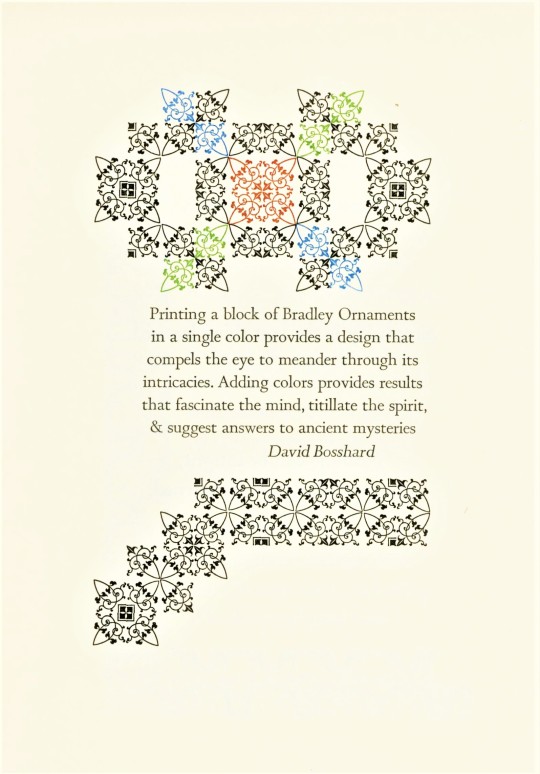


Typography Tuesday
Last week we highlighted a typographic display of David Bethel’s Glint type ornaments arranged and letterpress printed by the Milwaukee-born letterpress printer Michael Tarachow at his Pentagram Press. This week we present a selection of handset type displays by Tarachow from his 1988 book The Pentagram Press Commonplace Book, printed in an edition of 176 copies signed by the printer. This was his Tarachow’s first book printed in Minneapolis after moving there from Markesan, Wisconsin. He subtitles the book A Selection of Typographic Interpretations and states that it “required 112 press runs (time is the invisible factor!) on Arches Wove, which amounts to nearly 28,000 impressions.”
With the exception of George Bernard Shaw, the quotes are by type designers and letterpress printers: Leonard F. Bahr, Rudolf Koch, Eric Gill, Philip Gallo, Bruce Rogers, Wisconsin letterpress printer and outdoorsman David Brosshard, and Tarachow’s spouse and printing partner Merce Dostale. Click on the images to view the types used.
View other posts with work by the Pentagram Press.
View more Typography Tuesday posts.
#Typography Tuesday#typetuesday#Typography Tuesday#Michael Tarachow#Pentagram Press#The Pentagram Press Commonplace Book#commonplace books#type display books#type specimen books#george bernard shaw#Leonard F. Bahr#Rudolf Koch#Eric Gill#Philip Gallo#Bruce Rogers#David Brosshard#Merce Dostale
95 notes
·
View notes
Photo
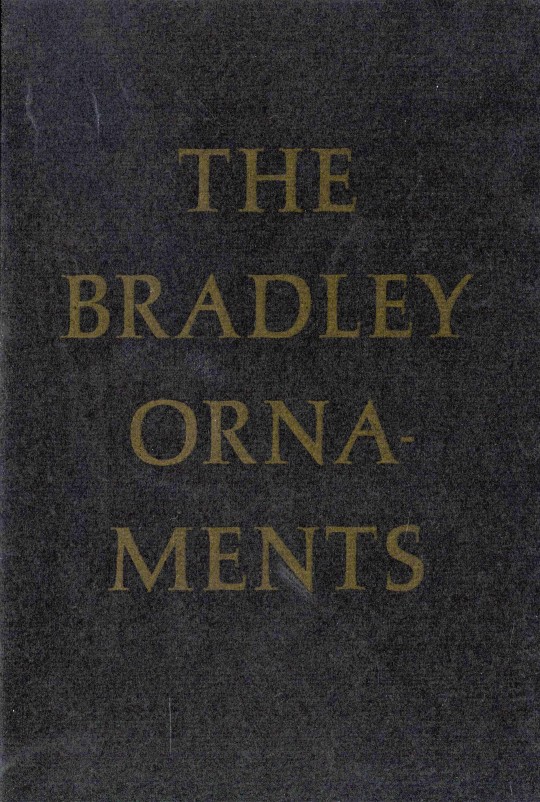
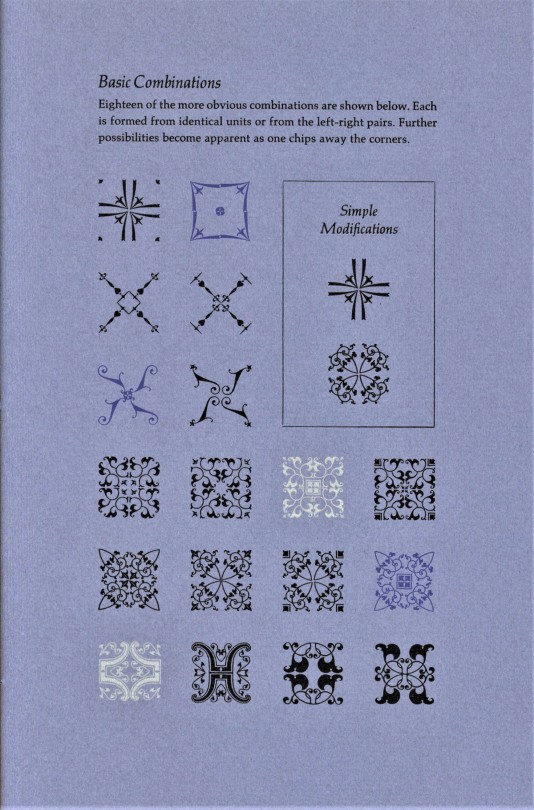

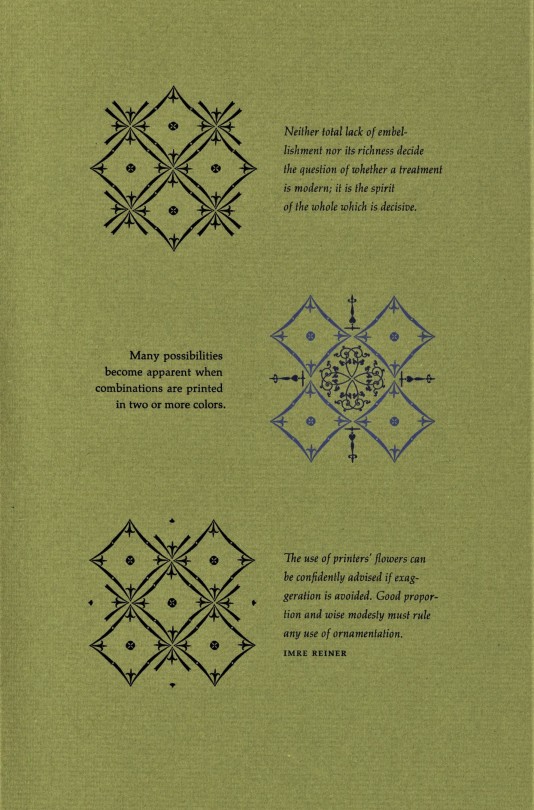
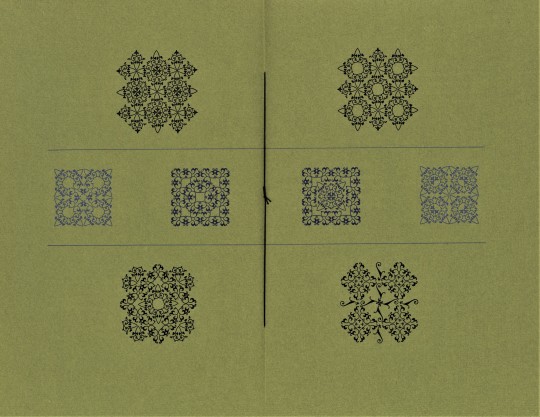
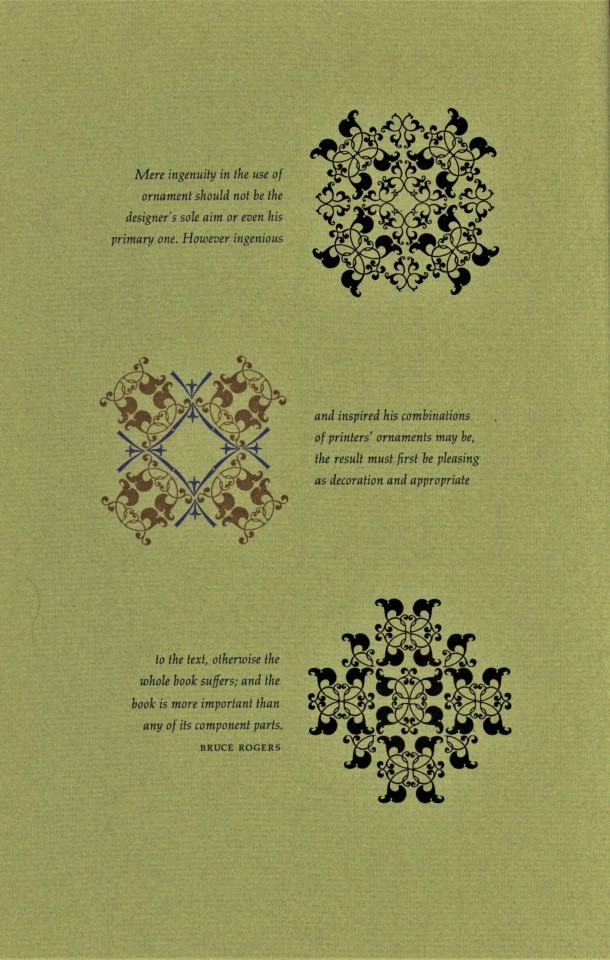
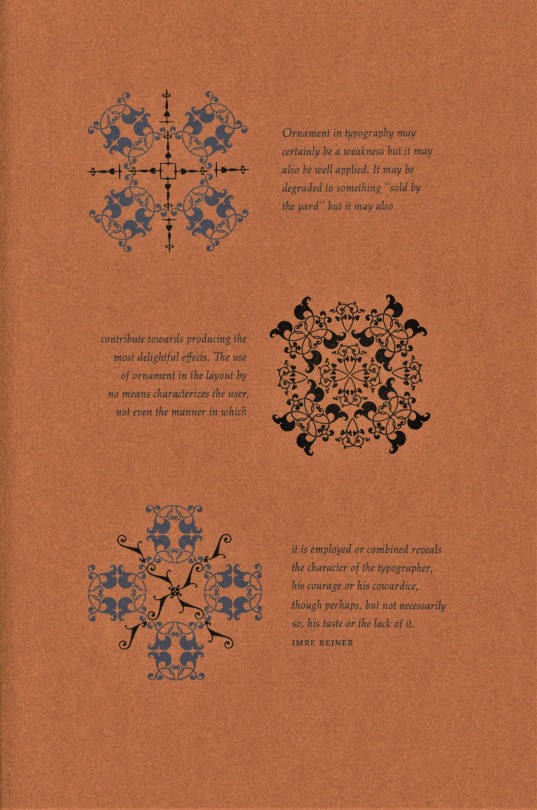
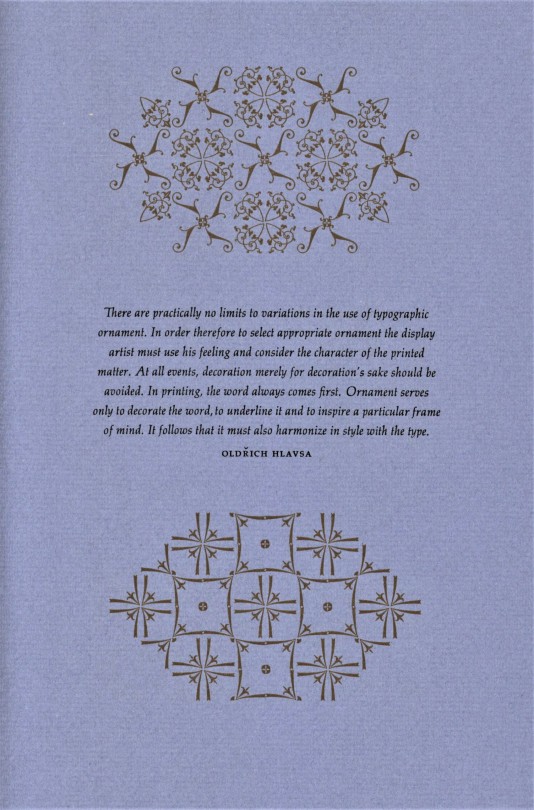
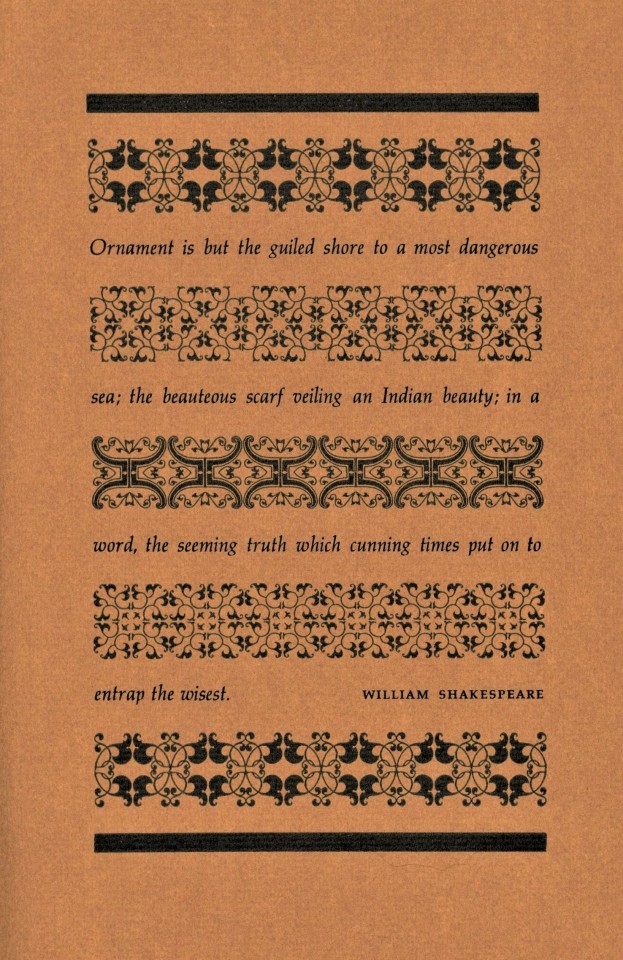
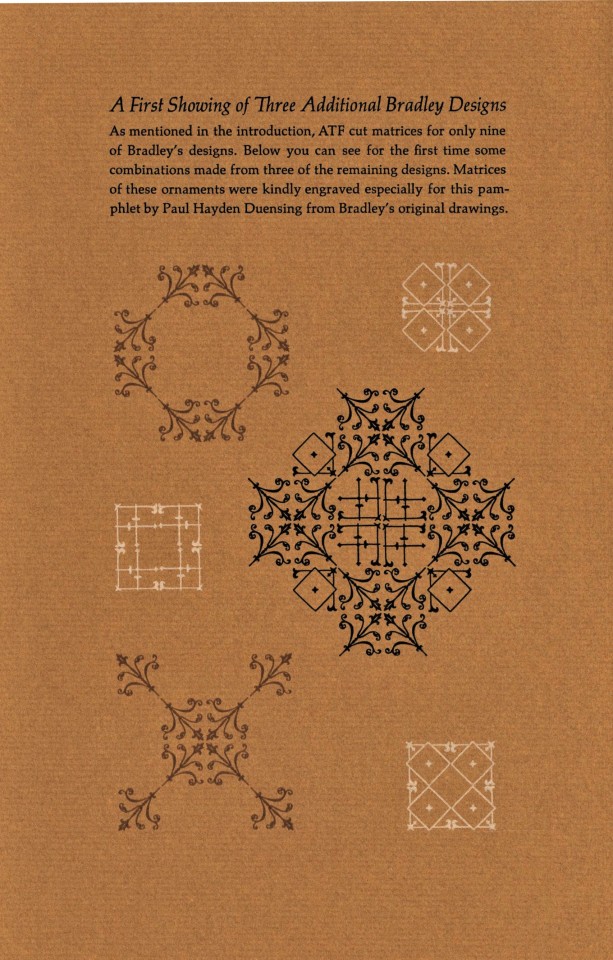
Typography Tuesday
Last week we presented typographer and fine-press printer Leonard F. Bahr‘s type display book TypoGraphia 1, hand-printed by Bahr at his Adagio Press in Harper Woods, Michigan, from 1975 to 1976. In it we showed an example of Bahr’s use of Bradley Combination Ornaments designed by WIll Bradley in 1952 and released by American Type Founders (ATF) in 1953.
This week we present Bahr’s Experiments with the Bradley Combination Ornament that he hand printed at his Adagio Press, with the text in Hermann Zapf’s Palatino types, all printed on Fabriano papers in an edition of 473 copies in 1967. Bahr displays the many decorative combinations that can be derived from Bradley’s only eleven 24-point type characters, a few of which we show here.
Bahr describes the origin of the ornaments when Will Bradley approached his friend Steve Watts, who was then type merchandising director for ATF, with a suggestion for a new series of type ornaments. Watts recalls that when he went to visit Bradley about the idea, the designer began to draw the designs freehand right in front of him:
Mind you, Mr. Bradley was then over eighty-five years old. . . . I am pretty sure he didn’t wear eyeglasses, and I was astounded to see him work so rapidly, with results that were almost perfectly symmetrical, with an even distribution of color. The . . . designs we selected for production were not reworked at the Foundry. Engraving patterns were made by direct photography, and the corner designs, when combined in various arrangements in finished type, fit almost perfectly.
Amazing!!
View our other Typography Tuesday posts.
#Typography Tuesday#typetuesday#Will Bradley#Bradley Combination Ornaments#Leonard F. Bahr#Adagio Press#American Type Founders#Experiments with the Bradley Combination Ornament#ATF#Palatino#Hermann Zapf#Fabriano#Steve Watts#Typography Tuesday#Jerry Buff#20th-century type#type ornaments#decorative type
274 notes
·
View notes
Photo

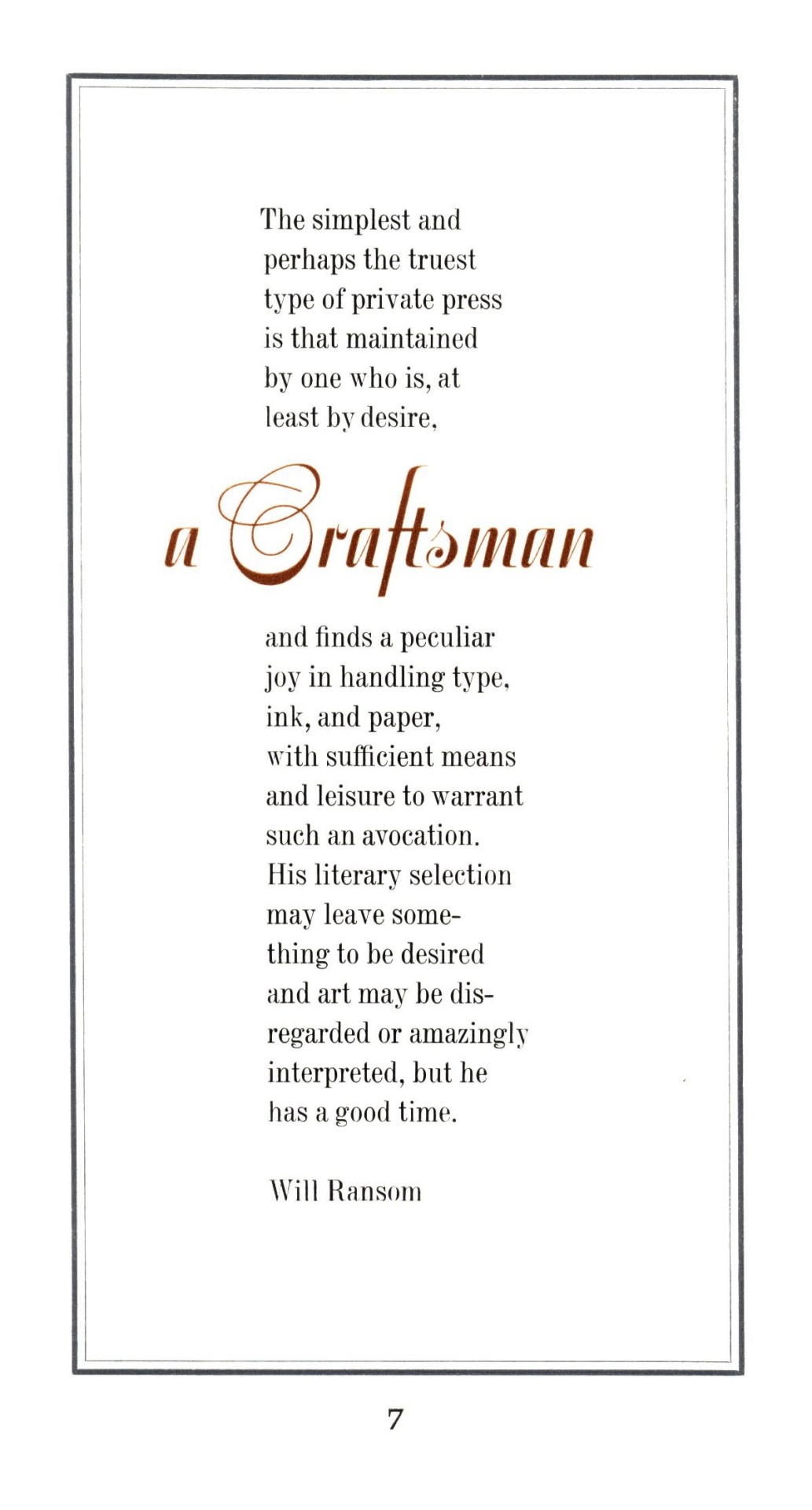
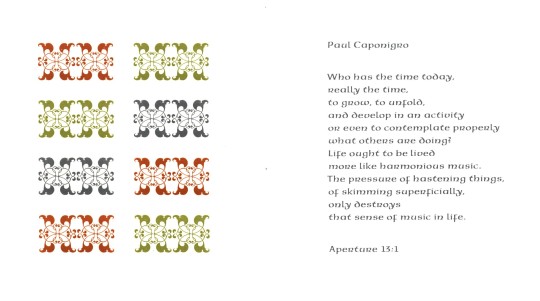

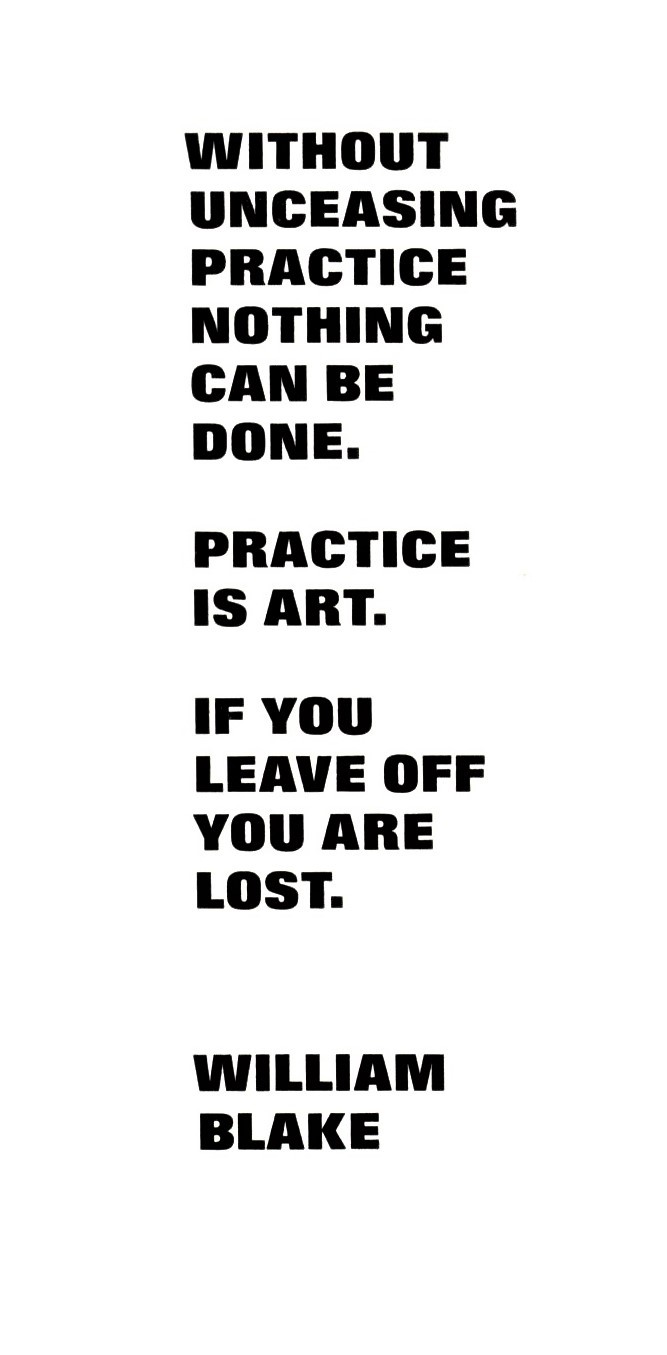

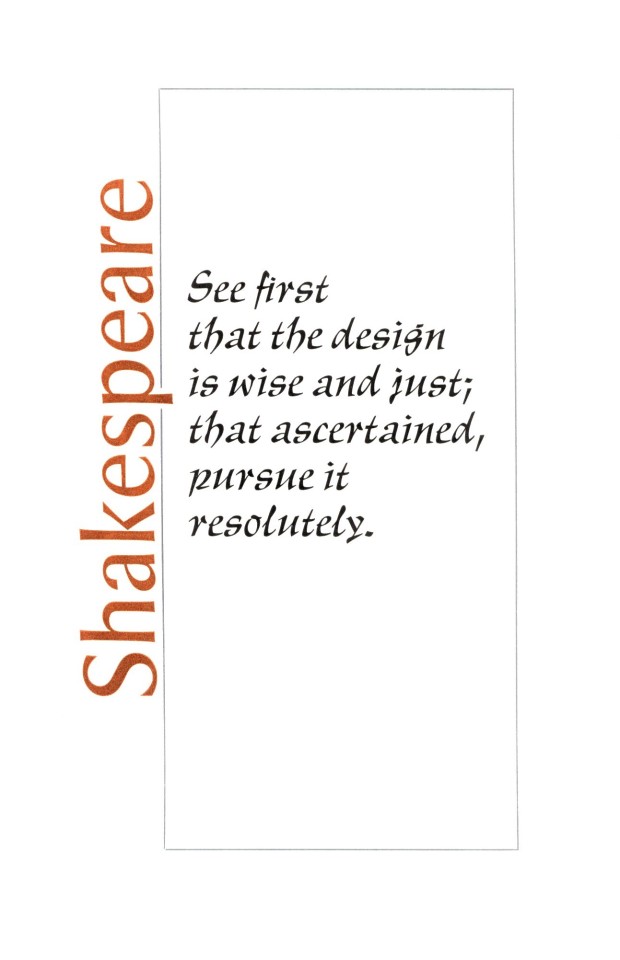

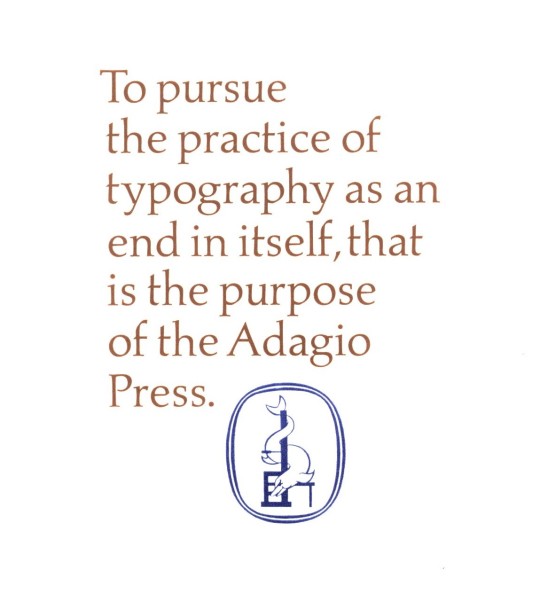
Typography Tuesday
The great American type and graphic designer Bradbury Thompson wrote, “I believe an avid interest in Type necessarily includes a zest for everyday life.” This sentiment could certainly be applied to the typographer and fine-press printer Leonard F. Bahr (1934-1992), who for 34 years was a typographer for George Willens and Company in Detroit, and ran his own private press, Adagio Press, from his home in Harper Woods, Michigan, from 1956 to the time of his untimely death just a couple of weeks short of his 58th birthday in 1992.
To celebrate Bahr’s typographic enthusiasm, which of course reflects the enthusiasm of all us type nerds, we present TypoGraphia 1, hand-printed by Bahr at his Adagio Press from 1975 to 1976 on a 12 x 18 platen press from a variety of handset types on Mohawk Superfine paper in an edition of 325 copies. Our copy is signed by Bahr. TypoGraphia 1 was intended to be the first in a series of “typographic exercises interspersed with notes on printing, typography and the private press.” His idea was to showcase his sizable typographic collection which he rarely got to use in his everyday practice. As far as we know, however, TypoGrahia 1 was the first of only two issues in this proposed series. The type forms shown here from top to bottom (also in the caption for each image) are:
1.) TypoGraphia 1 title: Palatino Roman designed by Hermann Zapf in 1949.
2.) A Craftsman: Will Ransom quote set in Stradivarius designed by Imre Reiner and Torino Roman released by the Nebiolo type foundry in 1908.
3.) Bradley Combination Ornaments designed by WIll Bradley in 1952 facing a quote by American photographer Paul Caponigro set in American Uncial designed by Victor Hammer in 1953.
4.) Part of a quote by Bradbury Thompson set in Athenaeum designed by Alessandro Butti in 1945, with Weiss Border ornaments designed by Emil Rudolph Weiss.
5.) William Blake quote set in Folio Extra Bold designed by Konrad F. Bauer and Walter Baum in 1957.
6.) Weiss Border ornaments facing a quote by Lewis Mumford set in Trump Medieval Italic and Bold designed by Georg Trump in 1954.
7.) Shakespeare quote set in Pascal designed by José de Mendoza in 1953 and Jaguar designed by Georg Trump in 1965.
8.) Cocktail Border ornaments.
9.) Palatino Roman.
View our other Typography Tuesday posts.
#Typography Tuesday#typetuesday#Leonard F. Bahr#TypoGrahia#Adagio Press#type display books#type specimen books#private press#fine press#Typography Tuesday#20th-century type#Jerry Buff
42 notes
·
View notes
Photo
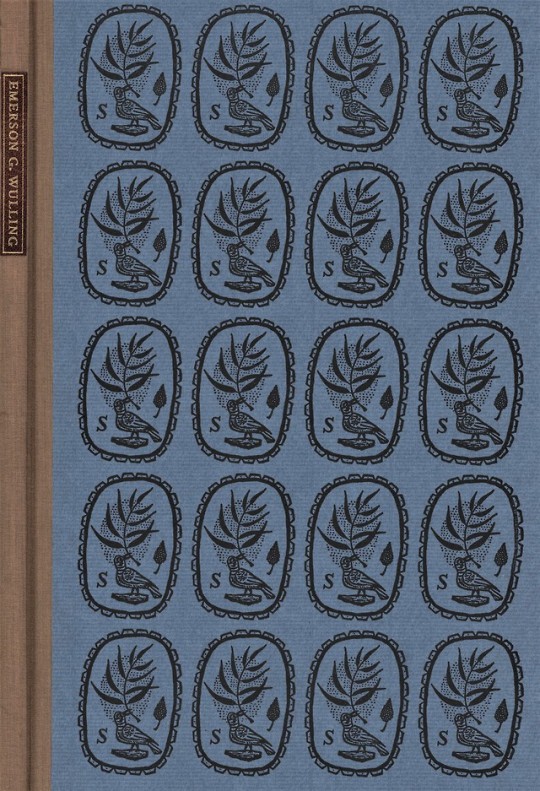

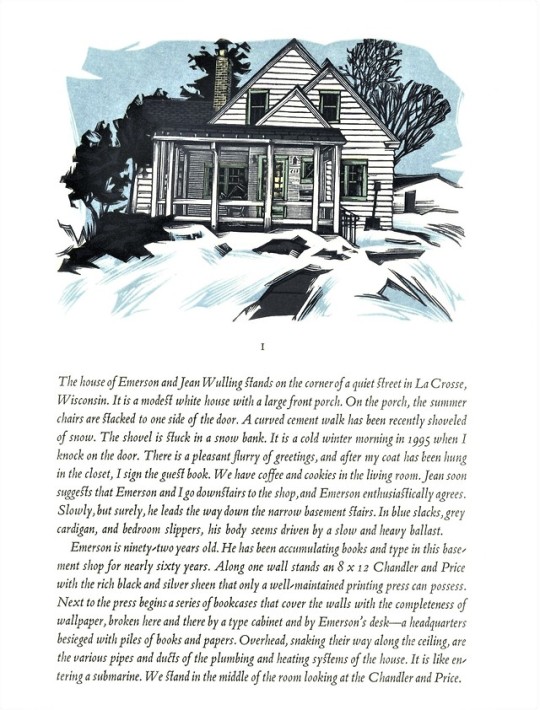
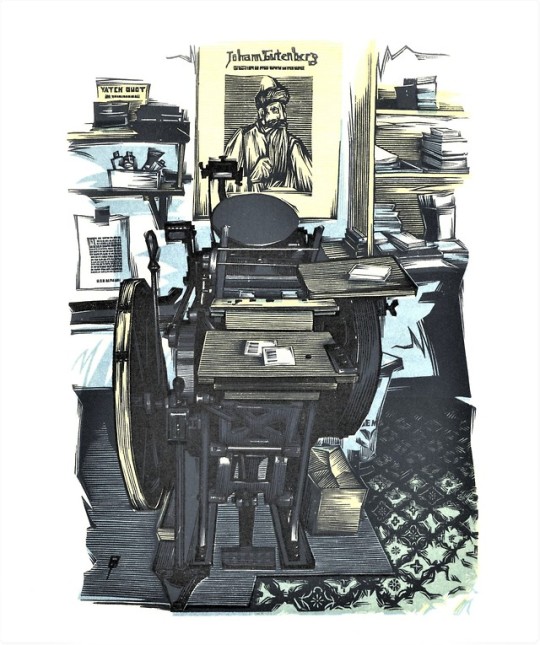


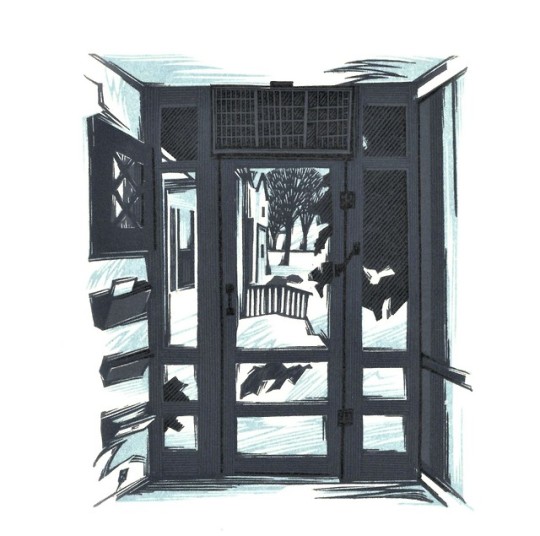

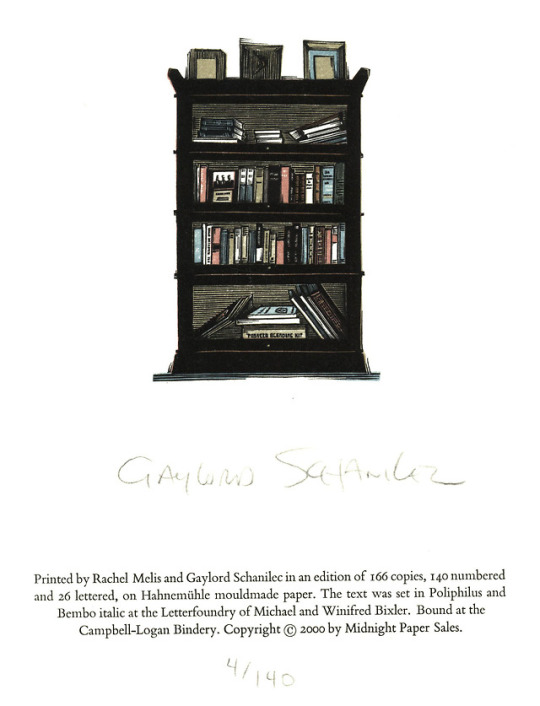
It’s Fine Press Friday!
This week we present Emerson G. Wulling: Printer for Pleasure, printed by Gaylord Schanilec and Rachel Melis, for Schanilec’s Midnight Paper Sales press in Stockholm, Wisconsin in 2000, in an edition of 166 copies, 140 numbered and 26 lettered. The book is a collection of interviews conducted by Gaylord Schanilec and Emerson G. Wulling, a private press printer who ran the Sumac Press from age 12 until his death in 2006 at age 102. Robert Rulon-Miller wrote an introduction for the book and compiled a checklist of over 200 of Wulling’s printed works. Interspersed with the text are examples of Wulling’s work printed from his original linoleum cut blocks, archival ink-jet reproductions of his printing, and two pieces printed by Wulling himself. There are seven color wood engravings by Gaylord Schanilec that are impressions of his visits with Emerson Wulling at his home in La Crosse, Wisconsin. The book is printed on Hanemühke mouldemade and it was bound by Campbell-Logan Bindery. The cover features Emerson Wulling’s Sumac Press logo. The text was set in Poliphilus and Bembo italic at the letterfoundry of Michael and Winifred Bixler.
Gaylord Schanilec wrote:
“Emerson Wulling printed for pleasure for over ninety years. The quintessential hobby printer, he maintained his shop in several locations over the years, producing a variety of books, pamphlets, and ephemera. An English professor and lover of books, his printing, with much of the text written by himself, consistently displays a lively sense of humor and a clever literary wit. He carried on correspondence with numerous important people in the book world including William Rudge, George Parker Winship, Ward Ritchie, Rockwell Kent, Paul Hayden Duensing, Walter Hamady, Frederic Goudy, Dard Hunter, Bruce Rogers, Norman Forgue, T. M. Cleland, Carol Blinn, Abe Lerner, and Leonard Bahr, among others. The text of the book is derived from conversations with Mr. Wulling which recorded by Gaylord Schanilec between 1995 and 1999. Robert Rulon-Miller contributed both an introduction and a complete checklist of Mr. Wulling’s printing.”
View more post about the work of Gaylord Schanilec.
View more Fine Press Friday posts.
–Sarah, Special Collections Graduate Assistant
#Emerson G. Wulling: Printer for Pleasure#Emerson Wulling#Sumac Press#Gaylord Schanilec#Midnight Paper Sales#Rachel Melis#Robert Rulon-Miller#Campbell-Logan Bindery#Michael and Winifred Bixler#fine press fridays#letterpress#printing history#Sarah Finn#sarah
30 notes
·
View notes